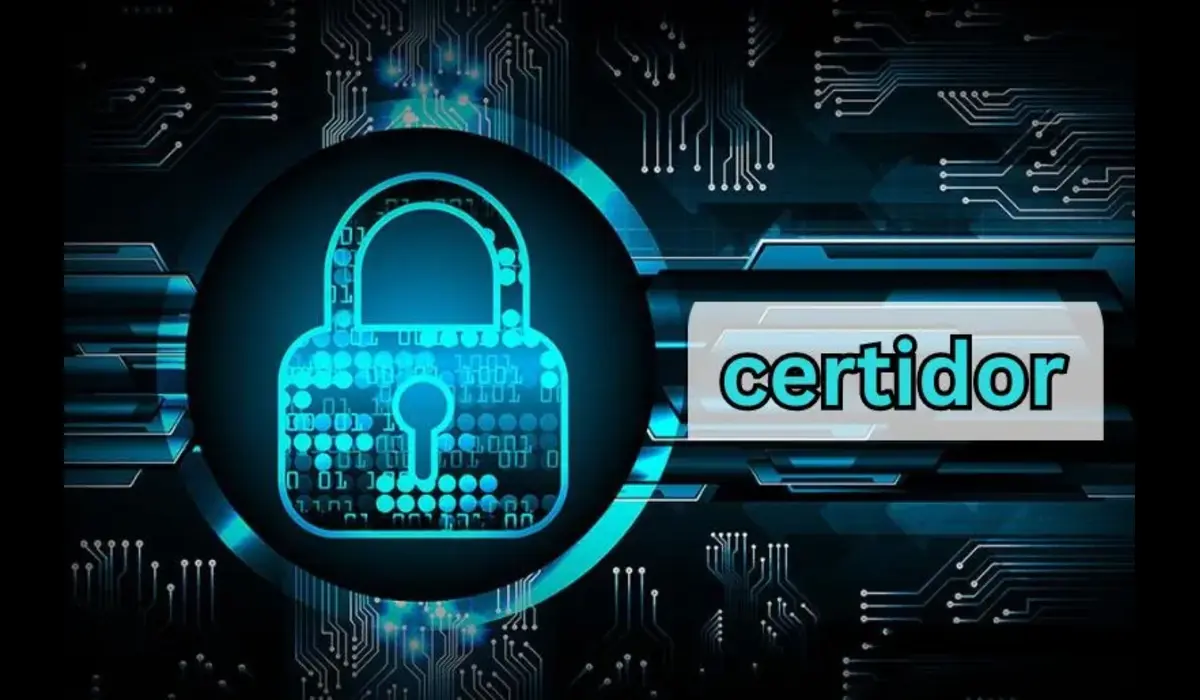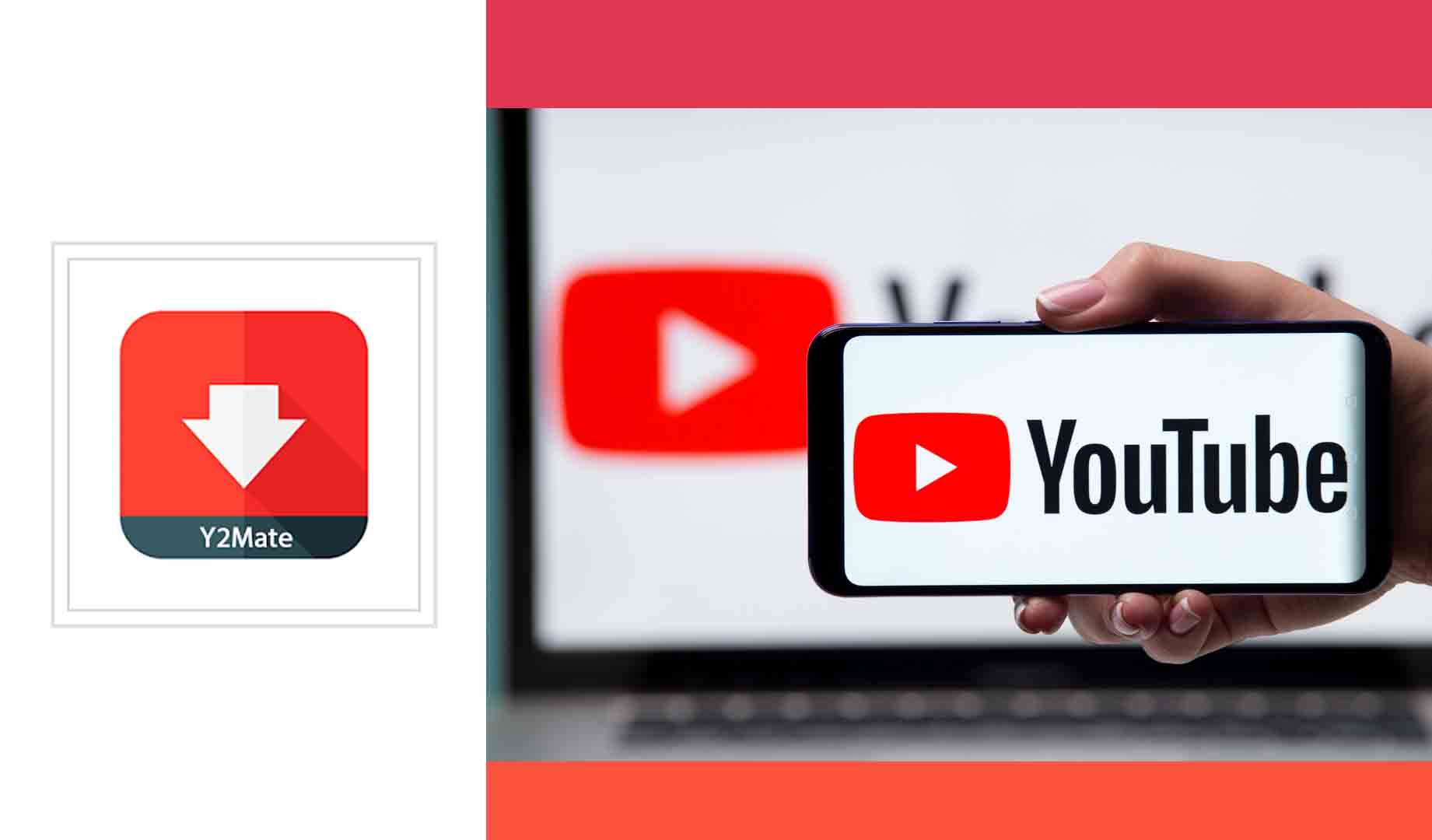BUSINESS
12 Tips to Create a Business Blog and then promote it

Are you running your business’s blog brand new, or do you have a blog for your company that isn’t generating the kind of traffic you’d like?
Since, in the end, the absence of traffic can mean less business. And less business could result in a vast old frown which is not what anyone wants to see. Big old’ frown.
Tips for Managing a Blog:
What you’ll discover in this post
- What exactly is a blog?
- How do you start a blog?
- Selecting a topic for your Blog
- Knowing your audience
- Selecting CMS CMS
- Engaging Content Tips
- The Content Marketing industry and blogging
- The importance of the Blog’s structure when it comes to starting your Blog
- Methods to find key phrases relevant to your business
- The significance of long-form blogs for business
- Why you should incorporate images and info graphics in your Blog
- The importance of following a good SEO on-page
- What are the reasons you should use semantic variations
- The importance of regularly updating your Blog’s content
- The importance of user experience
- How do you use redirects?
- The advantages of local SEO when blogging
- The reason why proofing is crucial
- How do you market your Blog for business?
1. What is a Blog Post
The term “blog post” refers to a blog entry as a literary work in digital form. In reality, it is an educational article and may include images, videos, and other types of media related to a particular topic.
Blog posts typically range between 600 and 2000 words and discuss various subjects like music production, camping, cooking, aliens, and digital marketing.
There are times when you are able to hear the whole Blog as a blog, and blog posts are referred to as a blog, too. The term is applied to both.
Someone could declare, “I recently wrote my first blog post,” when discussing one blog post. Yet, someone could mention, “check out my blog on digital marketing topics” when talking about their whole Blog. Both ways of using the word “digital marketing” can be used.
Blogs Information:
- Written in article format
- Specific topics are covered.
- Images, info graphics, or videos.
- They are typically between 500 and 2000plus words long.
- Increase traffic to websites via SEO
How to start a blog?
Beginning a blog is pretty simple. However, there are a few questions you must have the answers to before starting your Blog, particularly if you wish for it to be successful. In this context, “success” is defined as bringing people to visit your Blog and browse through your Blog’s posts.
- Select your topic or niche
- Know your audience
- Select the appropriate CMS for your Blog.
- Write engaging content
In the next section, we’ll examine each of these aspects of blogging in greater detail.
Select Your Niche or Topic
If you’re thinking of starting a blog, your subject of interest is the first thing to decide. For instance, a photography-related blog can be interesting. If you have a blog focused on photography, you could cover photographs taken outdoors, photos hoots with commercials, companies, and many other photography-related areas. If you narrow into a specific location, you’ll likely do better in bringing traffic to your website. For instance, “small business photography” or “commercial photography tips” could be more effective.
The niches usually do better in blogging. Because users typically search for specific subjects and queries instead of generalizations. For instance, is someone more likely to look up “photography” for example, or “who should shoot a commercial for a business commercial” Are they more likely to be searching for “cameras” as well as “types of cameras that can be used for headshots?”
Know Your Audience
When you decide on your subject, it is essential to understand your target audience. Both of them work together.
You can post on the same subject and, depending on the language you choose to use, the approach you take and the niche subjects in your Blog, your readers may be different. Always be aware of the reader prior to writing blogs.
2. Making the Right Choice for the CMS
Before you can write and publish anything, you’re likely to require a system for managing content, sometimes known as a CMS. There are a variety of CMS options available to use. The most well-known and simple-to-use CMS, according to many users, is Word Press.
Word Press is perfect for novice and advanced bloggers. It’s a robust CMS and comes with a variety of powerful tools to grow the Blog.
However, there are different kinds of blogging platforms, and content management systems. Other bloggers use Joule Drupal, Magneto, Blogger, and Medium.
Each blogging CMS offers its advantages. Content management systems such as Word Press and joule have been deemed open-source CMSs. However, Medium and Blogger aren’t. Blogger is a blog network, and Medium is controlled by Washington Post. The medium can also bring bloggers a fair amount of traffic that can get thousands of readers to their blogs dependent on the Blog and the content.
Content Management Systems (CMS) for Blogging
- word Press
- Jamal
- Drupal
- magneto
- Blogger
- Medium
3. Create engaging and exciting content.
This section of the Blog must be written boldly and in red. That’s the way they write important things or should. In any case, make sure that the content that you put up on your blog is unique and exciting. Your content should be valuable and provide readers with helpful information that can answer their questions, educates or entertains them, etc.
Engaging blogs are well-written and will often contain interesting images, info graphics, or even videos. Here one this you always keep in mind before writing that a best laptop for writers and bloggers is necessary and first thing that should a person have to write quality blog content.
When you decide to write 2000 words to beat the competition with 1500 words, be sure that the 2000 words you write are interesting. Be confident not to play the numbers game to see whose Blog is the longest. High-quality content will always win out at the final.
Tips for writing engaging blogs
- Create original and captivating content
- Make use of info graphics and pictures.
- Include video whenever appropriate.
Content Marketing
It can be a challenge for some organizations and businesses. Also, blogging can be highly competitive for particular companies based on their operating market. Therefore, hiring a professional content marketing firm and SEOs could be profitable.
Professional content marketing companies remain up-to-date with the latest SEO trends and the most recent modifications in Google. They typically have a deep understanding of blogging and all aspects involved in establishing and implementing a profitable blogging and content marketing plan that can bring free organic traffic.
Keyword Research
They conduct keyword research to ensure blog posts are written using key phrases that a business’s ideal customers are looking for. In addition, when conducting keyword research, content marketing companies can also determine which keywords a company is able to rank for in Google.
Content Calendars
Part of developing content marketing is creating a content plan. This will help businesses and agencies keep their schedules on track and the same level. Content calendars provide information on which blogs will be published and the date they’ll be published. Content calendars avoid surprises and allow everyone to remain on track with the blogging process.
ROI for Blogs
The ROI of having blogs written by SEO experts is often unimaginable. Sometimes, a blog could bring in thousands of dollars of new business annually for free. This means there is no advertising or organic traffic to bring new customers. In contrast, writing blogs with no information as well as employing an SEO agency without the experience to effectively develop strategies for content marketing could be expensive. Thus, having your Blog written correctly the first time is by itself a cost-saving measure.
Tips for Blogging Tips for Companies:
What you’ll learn from this post
- The importance of a blog’s structure when you start your Blog
- How to search for key phrases relevant to your business
- The importance of business blogs
- Why you should incorporate images and info graphics in your Blog
- It is crucial to follow good on-page SEO
- The reasons to write with semantic variations
- The importance of regularly updating the Blog’s content
- The importance of user experience
- How do you use redirects?
- The advantages of using local SEO when you blog
- Why proofing is crucial
- How can you promote your Blog for business?
When I was younger, I spent hours of my time on Blogs. I would write the blog post and confidently press the publish button and then expect to see my Blog appear in the search results of Google or, at the very least, see a rise in traffic to my website.
Sometimes everything was working perfectly. Sometimes it wasn’t working in any way.
In short, if I invested many hours writing blog posts gorgeous well-thought-out blog posts that were well written and well thought out, but did not get anything out of them; the disappointment was a big deal. Let’s admit it this was wasted time in the end.
Since then, I’ve learned some things that helped me significantly increase the effectiveness of my Blog. Today I’m going share 12 tips to help bring your business blogs to the things they were designed to do–get more traffic, exposure, interaction, and smiling faces.
Create a Business Blog that is Structured Correctly
It is crucial to know the Blog’s structure. It is recommended that your Taxonomy (categories and segments) for your Blog must be clearly defined before you begin your business blog.
If, however, your Blog is up and running, and the taxonomy of your company’s Blog is not organized correctly, don’t fret; this issue is fixable. It’s something we do every day.
If you’re using a CMS, such as content management software (CMS) such as word Press, then defining how your Blog will be structured will require making use of “Categories.”Categories” feature in the Blog’s post.
When you write a blog for your business, you’ll need to create at least five to 10 categories that are directly connected to your company. Every time you make an article, you’ll want your Blog to be categorized into any of the above categories. Easy enough, right?
If you visit our website, you will see that we have categories (sections that we have on the Blog) that are categorized as Marketing, Business SEO, Local citation, Website, and Video.
Each of these categories is closely related to the essence of our business. It is important to note that you won’t find the categories listed above or something not associated with our core business, such as “Team Outings.”
Adding categories that aren’t relevant to your primary industry or business will not improve your ranking on Google. Even if they did, it would not aid in developing any tangible business.
Tips for a successful Create your own “cornerstone” blog per of the categories, then promote this Blog by linking to it from other supportive blogs.
- Do your research on the keyword phrase before You Blog.
In the past, I’ve either forgotten to complete this step or have made this mistake a few times.
In the beginning, you must ensure that you’re creating content for a key phrase that people will search for.
It would help if you didn’t write for hours about an issue or keyword phrase that you believe will generate traffic simply because you think people will search for it. Creating an optimized blog for a term you already know people are searching for is essential.
The next step is when you locate a keyword or phrase with a high volume of searches (people are looking for it). If so, would this phrase merit your time to fight to rank?
For instance, if you sell shoes locally and your store’s name is Bob’s Shoes, will you be able to compete for the phrase “Nike sneakers” by using the keyword phrase “Nike shoe” in your website content?
No. You’ll get crushed.
Therefore, the best strategy is to search until you have an appropriate niche keyword that you can compete with. For instance, “Nike shoes work with those with flat feet.” I wouldn’t recommend using that phrase if you own the shoe store. I’ve not researched the subject, but you’ll understand.
4. Methods to research keyword phrases
When you need to research key phrases, many tools are available nowadays. You can subscribe for $100 per month to devices such as Ahrens or utilize Google Search and see what people are looking for.
BUSINESS
The Search for Authenticity: Unveiling the Mysteries of Certidor

Unveiling Certidor: Your Passport to Authenticity
Certidor is not just another tool in your digital arsenal; it’s your passport to authenticity in the vast wilderness of the internet. In simple terms, Certidor is a revolutionary platform designed to verify the authenticity of digital content. Think of it as your digital notary, stamping its seal of approval on everything from articles and photos to videos and social media posts.
The Power of Authenticity
In a world plagued by misinformation and fake news, authenticity is more valuable than ever before. But how can you separate fact from fiction in a sea of digital noise? That’s where Certidor swoops in to save the day. By harnessing the power of blockchain technology, Certidor ensures that every piece of verified content is tamper-proof and immutable.
Trust in the Digital Age
In the age of social media influencers and viral hoaxes, trust is a rare commodity. But with Certidor, trust is restored to its rightful place at the heart of the digital landscape. Whether you’re a journalist, marketer, or everyday internet user, Certidor gives you the confidence to navigate the online world with clarity and certainty.
How Certidor Works: Decoding the Magic
Now that we’ve scratched the surface of Certidor’s mystique, let’s roll up our sleeves and delve into the inner workings of this revolutionary platform. At its core, Certidor utilizes blockchain technology to create a decentralized network of trust. But what exactly does that mean?
Blockchain: The Building Blocks of Trust
Blockchain is the backbone of Certidor, providing an unbreakable chain of trust that links every verified piece of content to its rightful creator. Imagine a digital ledger that records every transaction and interaction, leaving behind an indelible trail of authenticity. That’s the power of blockchain, and Certidor harnesses it to its fullest potential.
Verification Protocols: Cracking the Code
But how does Certidor verify the authenticity of content in the first place? Through a sophisticated system of verification protocols, Certidor analyzes each piece of content with pinpoint accuracy. From metadata analysis to image recognition algorithms, Certidor leaves no stone unturned in its quest for authenticity.
The Human Touch: Beyond Algorithms
While algorithms play a crucial role in Certidor’s verification process, human oversight is equally important. After all, no algorithm can match the intuition and discernment of the human mind. That’s why Certidor employs a team of expert validators to review and verify content with meticulous attention to detail.
The Benefits of Certidor: A Game-Changer in the Digital Landscape
Now that we’ve peeled back the layers of Certidor’s complexity, let’s take a moment to appreciate the tangible benefits it brings to the table. From journalists and marketers to everyday internet users, Certidor levels the playing field and empowers everyone to engage with digital content in a meaningful way.
Credibility and Authenticity
In a world saturated with clickbait headlines and sensationalist stories, credibility is currency. With Certidor, you can rest assured that every piece of verified content is backed by airtight authenticity. Say goodbye to fake news and hello to a digital landscape built on trust and integrity.
Protection Against Misinformation
Misinformation is a pervasive threat in the digital age, spreading like wildfire across social media platforms and news outlets. But with Certidor, misinformation meets its match. By verifying the authenticity of content at the source, Certidor helps stem the tide of misinformation and promotes informed discourse.
Transparency and Accountability
One of the cornerstones of a healthy democracy is transparency and accountability. With Certidor, transparency isn’t just a buzzword; it’s a way of life. By providing a transparent record of verified content, Certidor holds creators accountable for their digital footprint and fosters a culture of accountability in the online world.
The Future of Certidor: Pioneering the Path Forward
As we gaze into the crystal ball of digital innovation, one thing is clear: the future of Certidor is brighter than ever before. With each passing day, Certidor continues to evolve and adapt to the ever-changing landscape of the internet. From expanding its reach to new platforms to enhancing its verification capabilities, Certidor is committed to staying ahead of the curve.
Expanding Horizons
In the fast-paced world of technology, stagnation is not an option. That’s why Certidor is constantly exploring new frontiers and expanding its horizons. Whether it’s integrating with emerging social media platforms or partnering with like-minded organizations, Certidor is always on the lookout for new opportunities to make a positive impact.
Innovation and Adaptation
Innovation is the lifeblood of Certidor, driving its relentless pursuit of excellence. From refining its verification protocols to implementing cutting-edge AI technologies, Certidor is dedicated to staying at the forefront of digital innovation. By embracing change and embracing the unknown, Certidor paves the way for a brighter, more authentic future.
Conclusion: Embracing the Journey
As we bring our journey through the labyrinth of Certidor to a close, let’s take a moment to reflect on the lessons we’ve learned along the way. In a world where truth is often elusive and authenticity is a rare gem, Certidor shines as a beacon of hope. By harnessing the power of blockchain technology and human ingenuity, Certidor empowers us to navigate the digital landscape with confidence and clarity. So the next time you find yourself lost in the sea of online content, remember that Certidor is always by your side, guiding you on the path to authenticity.
Celebrity
Unraveling the Enigma of Anesha Sanchez: A Journey Through Creativity and Inspiration

1. Introduction to Anesha Sanchez
Anesha Sanchez is not just an artist; she is a storyteller, a dreamer, and a visionary. Her journey into the world of art began at a young age, fueled by an innate curiosity and an insatiable thirst for self-expression.
2.Anesha Sanchez Early Life and Background
Born and raised in the vibrant city of Barcelona, Spain, Anesha Sanchez was surrounded by rich cultural heritage and artistic influences from an early age. Growing up in a supportive environment where creativity was encouraged, she found solace in painting, drawing, and exploring various art forms.
3.Anesha Sanchez Discovering the Passion for Creativity
Artistic Influences
Anesha Sanchez artistic journey was shaped by a diverse range of influences, from classical masters to contemporary innovators. She drew inspiration from the works of Picasso, Dali, and Gaudi, incorporating elements of surrealism and abstraction into her own creations.
Turning Point Moments
It was during her formative years that Anesha experienced several turning points that would shape her artistic path. A chance encounter with a street artist in her neighborhood sparked her curiosity for urban art, while a visit to the Prado Museum ignited her passion for traditional painting techniques.
4.Anesha Sanchez Exploring Various Art Forms
Anesha Sanchez’s creativity knows no bounds, as she seamlessly transitions between different mediums and techniques to bring her visions to life.
Painting
Her vibrant and expressive paintings evoke a sense of wonder and introspection, with bold brushstrokes and vivid colors that dance across the canvas.
Sculpting
In addition to painting, Anesha is also proficient in the art of sculpting, using clay, metal, and other materials to create captivating three-dimensional works of art.
Writing
Beyond visual art, Anesha is also a talented writer, penning poetry, short stories, and essays that explore themes of identity, spirituality, and the human experience.
5. Anesha Sanchez’s Unique Style and Techniques
What sets Anesha Sanchez apart is her distinct style and innovative techniques, which blend traditional craftsmanship with modern sensibilities. Whether she’s experimenting with mixed media or pushing the boundaries of abstraction, each of her creations bears the unmistakable mark of her artistic vision.
6. Anesha Sanchez Impact on the Art Community
Local Contributions
Anesha Sanchez’s contributions to the local art community have been profound, as she actively participates in exhibitions, workshops, and collaborative projects that promote cultural exchange and artistic dialogue.
Global Recognition
Her work has garnered international acclaim, with exhibitions in renowned galleries and museums around the world. From New York to Tokyo, Anesha’s art transcends geographical boundaries, resonating with audiences of all backgrounds and cultures.
7. Anesha Sanchez Overcoming Challenges and Adversities
Like any artist, Anesha Sanchez has faced her fair share of challenges and setbacks along the way. From self-doubt to financial struggles, she has weathered the storms with resilience and determination, emerging stronger and more inspired than ever before.
8. Inspirational Messages from Anesha
Through her art and her words, Anesha Sanchez seeks to inspire others to embrace their creativity, follow their dreams, and find beauty in the world around them. Her message is one of hope, empowerment, and the transformative power of art to heal and uplift the human spirit.
9. Anesha Sanchez Future Aspirations and Projects
Looking ahead, Anesha Sanchez shows no signs of slowing down, as she continues to push the boundaries of her creativity and explore new artistic horizons. With ambitious projects on the horizon, she remains committed to making a positive impact through her work and inspiring others to do the same.
10. Conclusion
In conclusion, Anesha Sanchez is more than just an artist; she is a visionary, a trailblazer, and a source of inspiration for generations to come. Her journey through creativity and inspiration serves as a reminder of the boundless potential of the human spirit to create beauty and meaning in the world.
FAQs
- What inspires Anesha’s art? Anesha draws inspiration from a myriad of sources, including nature, literature, and personal experiences.
- How does Anesha approach each new project? Anesha approaches each new project with an open mind and a spirit of experimentation, allowing her creativity to flow freely.
- Has Anesha faced any criticism or resistance in her artistic journey? Like any artist, Anesha has encountered criticism and resistance along the way, but she uses it as fuel to further refine and strengthen her artistic vision.
- What advice does Anesha have for aspiring artists? Anesha encourages aspiring artists to stay true to themselves, trust their instincts, and never be afraid to take risks or make mistakes.
- Where can I view Anesha’s artwork? Anesha’s artwork can be found in galleries, museums, and online platforms dedicated to showcasing emerging artists.
BUSINESS
Assumira: Navigating the Maze of Assumptions in Decision Making

Assumira, Discovering the secrets of successful decision-making can often be like navigating a treacherous maze. When overwhelmed by conflicting information and clouded judgment, it’s easy to get lost in a sea of assumptions. But no fear! Introducing your trusty guide through this confusing labyrinth.
In this blog post, we will explore how assumptions can heavily influence our decision-making process and hinder our ability to make informed decisions. From identifying and combating these hidden biases to applying effective strategies with this, we equip you with the tools necessary to overcome any decision-making challenge that comes your way.
Assumira The influence of assumptions on decision making
Assumira, Assumptions are like invisible filters through which we see the world and make decisions. They shape our perception and influence what information we pay attention to and how we interpret it. But these assumptions can often mislead us, cloud our judgment, and hinder effective decision-making.
When we rely too heavily on assumptions, we risk missing valuable insights and alternative perspectives. Our biases can blind us to potential risks or opportunities that can be critical to making informed decisions. This is especially true when we are faced with complex or ambiguous situations where it is difficult to find clear answers.
Assumptions can also lead to unconscious biases that cause us to choose certain options over others without even realizing it. These biases can result from social norms, personal experiences, or cultural influences. By becoming aware of these biases and challenging them, we open ourselves up to more objective decision-making processes.
To navigate the labyrinth of assumptions and make better decisions, it is important to develop a mindset of curiosity and critical thinking. We need to actively challenge our assumptions by seeking different perspectives from the different stakeholders involved in the decision-making process.
Additionally, using tools like scenario planning or conducting extensive research helps uncover hidden assumptions that may subconsciously influence our decisions. By gathering relevant data and considering multiple possibilities before reaching a conclusion, we increase the likelihood of making informed decisions.
Assumira Recognize and question assumptions
Assumira, Assumptions are sneaky creatures that can subtly influence our decision-making. They often lurk in the shadows and subtly shape our thoughts and actions without us noticing. But if we want to make better decisions, it is crucial that we examine and challenge these assumptions.
The first step in identifying assumptions is self-awareness. We must be aware of the beliefs and biases that underlie our thinking. What basic assumptions drive our decisions? Are they based on solid evidence or are they simply ingrained habits? It is important to question the validity of these assumptions because they have the potential to cloud our judgment.
One way to challenge assumptions is through critical thinking. By asking probing questions and seeking alternative perspectives, we can uncover hidden biases and flawed reasoning. For example, let’s say you assume that a new marketing campaign will increase sales because it has worked well in the past. If you question this assumption, you might consider other factors or try different strategies entirely.
Another powerful tool for challenging assumptions is data analysis. By gathering relevant information and conducting thorough research, we can test the validity of our assumptions against real-world evidence. This helps us make more informed decisions based on facts rather than unfounded beliefs.
In addition to individual efforts, collaboration plays a critical role in identifying and challenging assumptions within teams or organizations. Promoting open dialogue in which different viewpoints are accepted allows for a more comprehensive understanding of different perspectives and helps uncover flawed or biased thinking among group members.
Assumira Overcome bias in decision making
Assumira, Prejudices can often cloud our judgment and mislead us when making important decisions. These biases are unconscious influences that influence our thinking and can lead to irrational decisions. In order to make good decisions, it is important to recognize and overcome these biases.
A common tendency is confirmation bias, where we look for information that supports our pre-existing beliefs while ignoring evidence to the contrary. To overcome this bias, it is important to actively seek out different perspectives and question our own assumptions.
Another tendency is the sunk cost fallacy, which occurs when we continue to invest time or resources into something just because we have already put a lot of effort into something, even if it no longer makes logical sense. To overcome this bias, one must recognize that past investments should not dictate future decisions; Instead, focus on the current circumstances.
Anchoring bias is another common pitfall in decision making. This happens when we rely too much on initial information (the anchor) without considering other relevant factors. To counteract anchoring bias, try to set aside first impressions and collect as much data as possible before jumping to a conclusion.
Additionally, availability bias can cause us to overestimate the likelihood of events based on how easily they come to mind. By actively seeking objective data and considering all available options rather than just relying on what comes to mind, we can counteract this tendency.
Be aware of groupthink, a phenomenon in which individuals prioritize consensus within a group over critical thinking or alternative viewpoints. Overcome groupthink by encouraging open dialogue and creating an environment that values different perspectives.
Tools and strategies for effective decision making with Assumira
Assumira offers a variety of tools and strategies to help people and organizations make effective decisions. These tools are designed to help address the complexity of decision-making by addressing the underlying assumptions that can often cloud our judgment.
An important tool that this offers is the assumption mapping technique. The idea is to identify and visually represent all the assumptions that underlie a particular decision or situation. By articulating these assumptions clearly and succinctly, it is easier to question them and consider alternative perspectives.
Another valuable strategy from this is the use of scenario planning. This approach creates multiple scenarios based on different assumptions, allowing decision makers to explore possible outcomes under different conditions. By considering different options, you can better anticipate challenges, mitigate risks, and make more informed decisions.
Additionally, it encourages open dialogue and collaboration between team members during the decision-making process. By fostering an environment where people feel comfortable challenging assumptions and sharing different viewpoints, teams can use collective intelligence to make better decisions.
Additionally, it provides access to data analysis tools that enable decision makers to collect information from relevant data sources. These tools facilitate evidence-based decision making by providing objective information that helps combat biases based on false assumptions.
The training programs offered by this equip individuals with the critical thinking skills necessary for effective decision making. Through workshops and coaching sessions, participants learn to recognize their own biases and the biases present in their organizations. You’ll also learn techniques for systematically questioning assumptions while avoiding common mistakes like confirmation bias or groupthink.
Case studies: Real-world examples of successful decision making with Assumira
Let’s dive into some real-world case studies that demonstrate the power of Assumira as a guide for effective decision-making. These examples show how people and organizations have used its principles to navigate complex situations and achieve positive outcomes.
In a case study, a multinational company was considering expanding its operations into a new market. Through careful analysis and questioning of assumptions, they discovered that their original assumption about consumer demand was wrong. By challenging this assumption and conducting extensive market research, they were able to identify an untapped niche in the market, resulting in a successful entry strategy.
In another case study, a team is tasked with developing a new product for an existing customer base. Instead of relying solely on their own assumptions about customer needs, they engaged in open dialogue with customers through surveys and focus groups. This allowed them to gather valuable information and make informed decisions based on real user feedback.
In another example, a nonprofit organization wanted to combat the school dropout rate among disadvantaged youth. Instead of assuming that specific factors were responsible for these rates, they decided to dig deeper. They conducted interviews with students, teachers, parents and community members to gain a comprehensive understanding of the underlying issues. Armed with this knowledge, they developed specific interventions that effectively reduced dropout rates.
These case studies illustrate the importance of challenging assumptions and seeking different perspectives when making decisions. By adopting its mindset, people and organizations can overcome biases and make more informed decisions in different contexts.
Conclusion
The decision-making process is complex and full of twists and turns that can often lead us astray. Assumptions play a crucial role in this process, shaping our perspectives and influencing the decisions we make. In this article, we explored the concept of Assumira, a powerful tool for navigating the maze of assumptions in decision making.
When we understand how assumptions impact our decisions, we can begin to question them and uncover hidden biases that can cloud our judgment. This self-awareness allows us to approach decision-making more clearly and objectively.
Recognizing assumptions requires a good eye for detail and an open mind. This is about questioning our own beliefs and considering alternative perspectives. By challenging these assumptions, we free ourselves from limitations and open up new possibilities.
Overcoming bias is another crucial aspect of effective decision making with it. We all have inherent biases that can distort our thought process. By recognizing these biases, we can consciously work to mitigate their influence on our decisions.
it provides us with various tools and strategies to help us make smart decisions. This includes gathering relevant data, seeking different perspectives, conducting thorough analysis, weighing potential consequences, exploring alternatives, and obtaining feedback from trusted sources.
Real-world case studies demonstrate it’s effectiveness in decision-making across various industries such as finance, healthcare, technology and more. These examples illustrate how people or organizations have successfully navigated complex situations by actively challenging assumptions using the its principles.
Frequently asked questions
Q: What is Assumira?
A: Assumira is a powerful decision-making tool that helps individuals and companies navigate the complex maze of assumptions. Provides a framework for recognizing, challenging, and overcoming biases in decision-making.
Q: How do assumptions impact decision making?
A: Assumptions play an important role in shaping our decisions. They can limit our perspectives, cloud our judgment and mislead us. By understanding how assumptions influence our thinking, we can make more informed and effective decisions.
Q: How can I identify my assumptions?
A: Recognizing assumptions requires self-awareness and critical thinking. Be mindful of your thoughts, beliefs, and biases when making decisions. Challenge yourself and ask yourself why you hold certain beliefs or take certain actions.
Q: How can I challenge my assumptions?
A: Challenging assumptions means seeking other perspectives, gathering relevant data or evidence, actively questioning your own beliefs, asking experts or mentors for advice, and being open to alternative perspectives.
Q: Can Assumira help overcome bias in decision-making?
A: Yes! Assumira offers tools and strategies specifically designed to deal with cognitive biases such as confirmation bias or anchoring bias. By regularly applying these techniques under Assumira’s guidance, you can reduce the impact of bias on your decision-making process.
-

 HEALTH2 years ago
HEALTH2 years agoDr. Naval Parikh: Thyroid Disease Signs, Symptoms & Treatment Options
-

 HEALTH2 years ago
HEALTH2 years agoDr. Naval Parikh: Back Injuries, Types, Causes, Symptoms and Treatment
-

 FASHION12 months ago
FASHION12 months agoBest Color Shoes for Men: Making a Style Statement
-

 TECH2 years ago
TECH2 years agoHow to Turn Flashlight On iPhone & Off, 3 Easy Ways
-

 Celebrity2 years ago
Celebrity2 years agoDay 3 of Spring 2016 New York Fashion Week’s most inspiring
-

 GAMES2 years ago
GAMES2 years agoAbout Tekken 3
-

 APPS2 years ago
APPS2 years agoY2mate download videos from YouTube Facebook etc
-

 HEALTH8 months ago
HEALTH8 months agoTop 5 Best Activities For Well being




